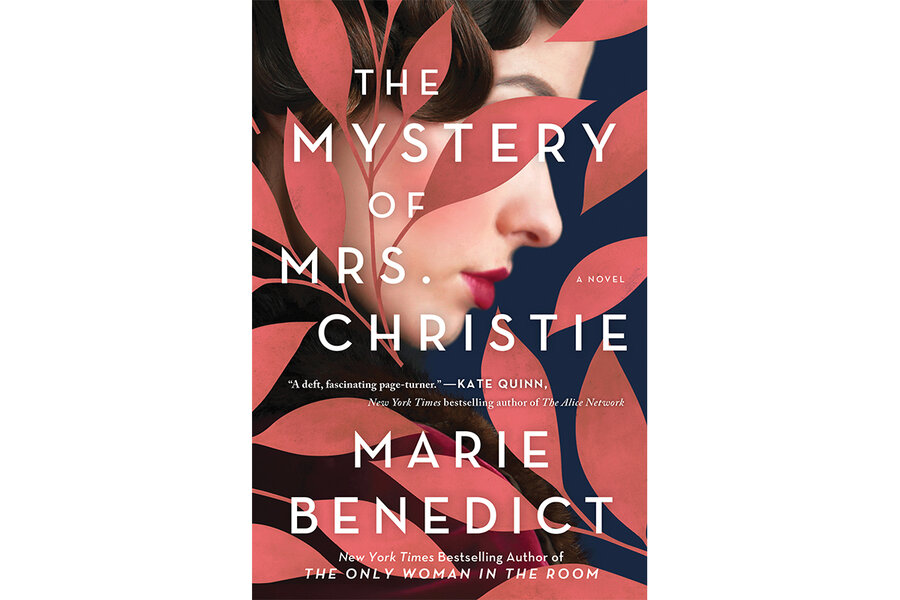Agatha, decoded, in “The Mystery of Mrs. Christie”
Loading...
It’s quite remarkable that the third-bestselling author of all time – outdone only by Shakespeare and the Bible – wrote mystery novels and had no formal education. What’s even more incredible is that the “Queen of Crime” – Dame Agatha Christie (“And Then There Were None,” “Murder on the Orient Express”) – became the center of a fascinating missing person’s case herself on Dec. 3, 1926, when she kissed her 7-year-old daughter, Rosalind, goodnight, then vanished for 11 days. The police found her car parked near the gloomy Silent Pool, igniting an extensive hunt, and Agatha’s unfaithful husband, Colonel Archibald Christie, was suspected of murdering her. It was a case fit for Hercule Poirot or Miss Marple.
Cue, instead, lawyer and bestselling novelist Marie Benedict (“The Only Woman in the Room,” “The Other Einstein,” “Carnegie's Maid,” “Lady Clementine”). Her brilliantly inspired historical fiction, “The Mystery of Mrs. Christie,” boldly speculates on what could have happened during those unexplained days. Several other books and movies have tried fictionalizing this stretch of time, with mixed results, for example the 1979 film “Agatha” with Vanessa Redgrave and Dustin Hoffman. But Benedict’s imagining stands out from the pack, cleverly positing that Agatha’s private tragedy was the genesis of the legendary author’s success.
The novel opens moodily with a letter written by Agatha and left for Archie before her disappearance. “Freeing myself of the shackles of your judgment and your malfeasance will be a delightful result of your duplicity, a result you never intended,” she writes.
From there, a rich dual storyline unfolds. Alternating chapters portray both spouses’ perspectives; those titled “The Manuscript” illuminate Agatha’s voice and ebullient personality. Her story begins on the day she meets the debonair and mysterious Colonel, when she observes that she “could not have written a more perfect man.”
On the other hand, chapters titled “After the Disappearance” focus on an anxious Archie as he navigates the missing persons investigation in which he is the prime suspect: “Overnight, he is transformed from handsome war hero in an idyllic marriage to suspicious catalyst for his wife’s flight.”
The rhythms of their courtship ebb and flow through WWI, during which Archie was a pilot and Agatha was a war nurse. (In real life, she gleaned knowledge of poisons from the hospital dispensary that eventually enhanced the plots of her novels.) Agatha’s burgeoning career as a writer often took a back seat to societal norms and her mother’s bidding, which demanded that she always put her husband first, regardless of her own needs.
Benedict shines as a suspense writer, paying excellent homage to Agatha’s novels with twisting motives and deftly described actions. Her vivid characterizations and sweeping prose transport the reader right back to the 1900s. News reports and event timelines from the era fit effortlessly into Agatha’s observations of the happiness and pain that fill her world.
The ending is a picture-perfect conclusion to the mystery of Agatha’s disappearance which reveals her uniquely intelligent soul. The real-life Agatha famously preferred privacy, never gave interviews, and dodged press inquiries. (Even her autobiography, published almost two years after her death, made no mention of the missing 11 days.) Yet Benedict convincingly zeroes in on that time, and even manages to create a healing message from it: One should be true to one’s self, cherish integrity, and always be ready for new adventures.
After the Christies divorced in 1928, it’s comforting to know Agatha went on to marry Sir Max Mallowan, an archaeologist, to whom she was wedded for 46 years. She loved accompanying him to exotic locations that sometimes became backgrounds in her books. Mallowan wrote in his memoirs, “Few men know what it is to live in harmony beside an imaginative, creative mind which inspires life with zest.”
In Agatha’s 1940 novel “Sad Cypress,” Hercule Poirot may have best summed up the silver lining of his creator’s life with the line, “When one has walked in the valley of the shadow of death, and come out of it into the sunshine – then, mon cher, it is a new life that begins.” Touché, Poirot!








